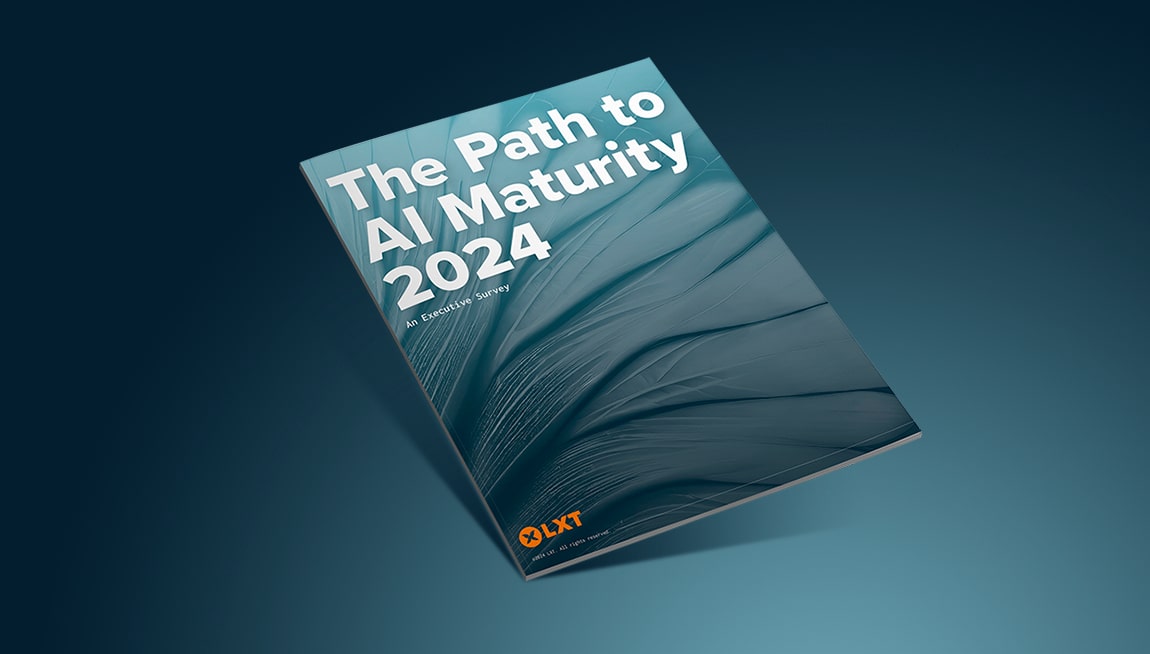While 83% of enterprises now report operational AI implementations, only a fraction successfully scale beyond pilots to transformational business impact. The gap reveals an execution problem masquerading as a technology challenge.
Most AI strategies focus on vision but lack the operational blueprints necessary for sustainable transformation. This article addresses critical gaps in current enterprise AI strategy, and provides some of the missing frameworks for measurement, failure recovery, scaling, and long-term evolution that determine success.
The investment-success correlation that reveals everything
Data tells a compelling story about what actually drives AI success. Professional services organizations report the highest failure rate at 48% while committing only 7% of their budgets to AI. Meanwhile, retail achieves the lowest failure rate at 34% while allocating 21% of budgets to AI initiatives. This correlation reveals a critical gap in enterprise AI strategy: inadequate investment in the operational foundations that enable success.
Mature organizations report significantly lower failure rates (28.9% vs 43.4%) compared to experimenters, but maturity extends beyond having AI in production to encompass sophisticated measurement frameworks, recovery mechanisms, and scaling processes that prevent the silent failures plaguing less prepared organizations.
Why measurement frameworks separate winners from strugglers
The successful 61% don’t just deploy AI – they measure it differently. Organizations using AI-enabled KPIs are five times more likely to effectively align incentive structures with objectives compared to those relying on legacy metrics. This measurement sophistication directly correlates with implementation success.
Department-specific frameworks prove essential for sustainable scaling. Sales teams monitor automated lead qualification rates and AI-assisted conversion metrics. Operations track process automation levels and error reduction percentages. Customer service requires unique KPIs: leading organizations report a 39% reduction in average handle time within three months of deploying AI agent assistants.
Real-time monitoring prevents the silent failures that plague the 39%, and build dashboards track both technical metrics (model latency, data drift indicators using Kolmogorov-Smirnov tests) and business outcomes (revenue impact, customer satisfaction). This dual approach ensures you catch performance degradation before it impacts operations.
Building recovery frameworks that actually work
The 39% failure rate has improved from 46% in 2023, suggesting organizations are learning from mistakes. But improvement requires systematic approaches to failure recovery, rather than hoping problems won’t occur.
Technical failures often stem from overfitting, where AI models become overly specialized in training data and fail to generalize to new inputs, or data drift when statistical properties change over time. 92.7% of executives identify training data as the most significant barrier to successful implementation, specifically data quality, availability, and suitability for regulatory requirements.
Smart recovery starts with structured post-mortem frameworks. Create clear step-by-step plans for rolling back failed AI systems. Document rollback procedures and test them regularly. The organizations that recover successfully treat failure as a learning opportunity, rather than a catastrophe.
Leading recovery patterns emerge from systematic approaches to learning from failures. Siemens’ predictive maintenance approach exemplifies this: they create “failure fingerprints” – documented patterns from sensor data that predict equipment failures weeks in advance. They apply this same systematic thinking to AI implementations, creating early warning systems for model drift and performance degradation that prevent project failures before they impact operations.
The scaling gap: Why 88% of pilots fail to reach production
The scaling challenge reveals the most significant execution gap. In organizations with mature MLOps practices, 54% of AI projects successfully make it from pilot to production. For everyone else, the success rate plummets because pilots mask critical infrastructure challenges with clean data extracts, while production systems need dynamic, real-time data flows from multiple sources with inherent inconsistencies.
Investment patterns reflect this scaling reality. While 47% of organizations continue investing between $1-50 million, the number investing between $50-500 million has more than doubled, and those investing over $500 million increased seven-fold. Organizations are prioritizing training data (19%), software (15%), and product development (13%) as primary investment categories because these foundations enable scaling.
Technical debt accumulates quickly without structured approaches. A model that works on 1,000 records may slow to a crawl on 100 million records. Many AI solutions require refactoring for performance and scalability through techniques like batching, model compression, and distributed computing before they’re production-ready.
Implement phased rollouts using the MLOps maturity model: start with manual processes (Level 0), progress to automated ML pipelines with continuous training (Level 1), then achieve full CI/CD automation (Level 2). Revolut deployed machine learning for fraud detection in nine months by building automated retraining pipelines that continuously adapt to new fraud patterns from millions of daily transactions. Their structured approach enabled real-time fraud scoring at scale while maintaining regulatory compliance, demonstrating how systematic MLOps practices compress deployment timelines from years to months.
The cultural transformation challenge hiding in plain sight
Employee resistance remains the most significant barrier to AI scaling, yet 91% of large-company data leaders cite“cultural challenges/change management” as impeding organizational efforts to become data-driven, while only 9% point to technology challenges. This cultural gap explains why technically sound AI projects fail to achieve business impact.
The measurement frameworks that separate winners from strugglers become essential tools for cultural transformation. Organizations using AI-enabled KPIs are five times more likely to effectively align incentive structures with objectives because these metrics make AI benefits visible and personal. When employees see clear connections between AI tools and their performance metrics, resistance transforms into adoption.
Current usage patterns reveal the opportunity hiding within this challenge. 65% of workforces actively use AI features built into existing platforms, while 59% independently leverage standalone AI tools like ChatGPT, despite these tools lacking formal company-wide deployment. This bottom-up adoption creates opportunities for structured integration rather than resistance management.
Middle managers serve as the critical bridge between executive vision and frontline execution. They translate strategic AI objectives into actionable plans while addressing resistance through transparent communication. Successful organizations create AI champions across departments: early adopters who serve as visible examples of successful integration.
Communication must address concerns proactively: define AI clearly with specific examples, be transparent about capabilities and limitations, and create safe spaces for employees to express doubts. The measurement frameworks established earlier provide the concrete examples needed to make these conversations productive.
Evolution strategies that prevent obsolescence
The 83% operating at scale face a new challenge: staying relevant as AI technology evolves rapidly. Organizations that successfully scaled from pilots now risk their production systems becoming outdated as new capabilities emerge. The same systematic approaches that enabled initial scaling become critical for continuous evolution.
Continuous improvement requires structured frameworks beyond initial deployment. 94% of organizations expect their need for training data to increase, with nearly a quarter anticipating significant growth. As models can “drift,” meaning performance changes over time, implement quarterly strategy reviews using PDSA (Plan-Do-Study-Act) cycles.
Data strategy evolution reflects increasing sophistication. 80% of organizations prioritize high-quality, accurate data to fuel AI performance, while mature organizations increasingly focus on domain expert data (48% vs 36% for experimenters). Organizations are expanding beyond text and structured data to leverage handwriting (38% planning future use), gestures (35%), and time-series data (34%) for richer behavioral insights.
Avoid vendor lock-in by building self-reliance rather than simply preventing dependency. Your proprietary assets (use cases, business logic, data, and internal expertise) matter more than avoiding specific vendors. Create modular AI architectures that break down systems into reusable modules (NLP, vision, prediction) enabling independent upgrades and replacements.
Technology refresh cycles should align with business needs, rather than vendor roadmaps. AI mature companies experience 50% higher revenue growth and 3x faster innovation cycles through continuous evolution rather than periodic overhauls.
Cross-functional coordination that delivers results
The cultural challenges that plague 91% of organizations often stem from poor coordination between departments. Breaking down silos requires clear structure beyond good intentions. The RACI Matrix (Responsible, Accountable, Consulted, Informed) brings clarity to AI projects by ensuring every task has an owner while avoiding confusion. This structured approach directly addresses the coordination failures that contribute to the cultural resistance plaguing most AI initiatives.
Successful teams engage key departments from the start: brand, communications, product marketing, growth marketing, and analytics. This early engagement prevents the territorial disputes and resistance that emerge when AI initiatives feel imposed rather than collaborative.
Weekly team meetings help assess risks around priorities and deadlines, focusing on solving day-to-day problems. Use automated tools to document responsibilities: AI can analyze project tasks and create RACI assignments, saving time while keeping everyone aligned. These regular touchpoints create the transparency that transforms skeptics into champions.
This organized approach transforms individual success into team success. When coordination works well, organizations see better results across their AI applications, from generative AI delivering 65% ROI to predictive analytics at 45%. Teams that work together execute faster and avoid the costly delays that come from poor communication.
The path forward: From the 83% to true transformation
Success in enterprise AI demands operational excellence beyond strategic vision. The data reveals clear patterns: mature organizations achieve lower failure rates, companies with sophisticated measurement perform better, and systematic MLOps practices improve scaling success
Start with measurement frameworks and failure recovery plans. These basics decide whether your AI projects join the small group that truly transforms or stay stuck with the 83% that run AI but don’t capture anywhere close to the value that they could from it. The real question is how fast you can move from just operating AI to actually transforming with it.
Success requires double loop learning – not just fixing what breaks, but questioning whether your entire approach needs to change. Companies that embrace this mindset, backed by quality training data and smart partnerships, will lead the AI transformation rather than just survive it. The 83% operational mark is where the journey begins, not where it ends.




